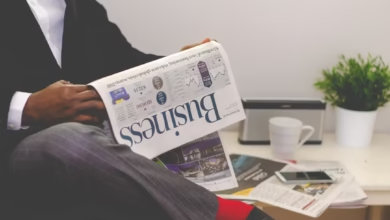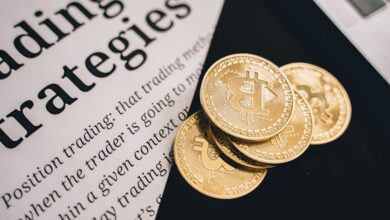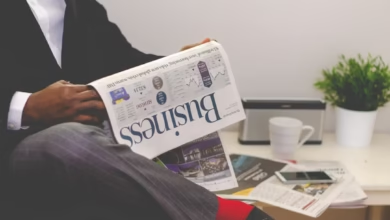Inflation Unpacked: Navigating Its Impact on Purchasing Power, Investment Strategies, and Economic Stability

Inflation is a pervasive economic phenomenon that influences nearly every aspect of our financial lives, from the prices we pay for everyday goods to the value of our investments. As inflation rates fluctuate, they can erode consumer purchasing power, making it essential for individuals and families to understand how rising prices affect their financial well-being. Moreover, inflation is closely tied to interest rates, creating a complex relationship that can impact borrowing costs and savings growth. In this article, we will explore the multifaceted effects of inflation, examining its implications for consumer behavior, investment strategies, and the broader economy. We will delve into historical instances of hyperinflation, drawing valuable lessons from the past, and analyze the role of central banks in combating inflation through monetary policy. Additionally, we will consider how supply chain disruptions contribute to inflationary pressures and explore the impact of rising prices on wages and employment. By equipping ourselves with this knowledge, we can better navigate the economic landscape and develop strategies to protect our financial futures in an ever-changing environment.
- Here are three suggested headlines for sections of the article:
- 1. **Understanding Inflation: Its Effects on Consumer Purchasing Power and Asset Values**
- 2. **Navigating Inflationary Pressures: Strategies for Portfolio Protection and Economic Resilience**
Here are three suggested headlines for sections of the article:
**Understanding Inflation and Its Effects on Consumer Purchasing Power**
Inflation directly erodes consumer purchasing power, meaning that as prices rise, the same amount of money buys fewer goods and services. This decline in purchasing power disproportionately affects lower-income households, which spend a larger portion of their income on essential items such as food, housing, and transportation. Over time, sustained inflation can lead to a decrease in overall living standards, prompting consumers to adjust their spending habits. For instance, they may shift from brand-name products to generic alternatives or reduce discretionary spending altogether.
**The Relationship Between Inflation and Interest Rates**
Inflation and interest rates share a complex relationship, often described by the Fisher Equation, which states that nominal interest rates reflect the sum of real interest rates and expected inflation. When inflation rises, central banks typically respond by increasing interest rates to curb spending and borrowing, aiming to stabilize prices. Higher interest rates can lead to decreased consumer and business spending, which may slow economic growth. Conversely, lower inflation often allows for lower interest rates, encouraging borrowing and investment. This cyclical relationship underscores the importance of monitoring inflation trends for both consumers and investors.
**Strategies for Protecting Your Portfolio from Inflation**
Investors can employ several strategies to mitigate the adverse effects of inflation on their portfolios. One effective approach is to diversify investments across various asset classes, including stocks, real estate, and commodities, which tend to perform well during inflationary periods. Additionally, incorporating inflation-protected securities, such as Treasury Inflation-Protected Securities (TIPS), can provide a hedge against rising prices. Real assets, like gold and real estate, often retain value during inflationary times, making them attractive options. Regular portfolio reviews and adjustments in response to changing economic conditions can further enhance protection against inflation’s impact.
1. **Understanding Inflation: Its Effects on Consumer Purchasing Power and Asset Values**
Inflation is the rate at which the general level of prices for goods and services rises, leading to a decrease in purchasing power. As inflation increases, each unit of currency buys fewer goods and services, effectively eroding consumers' ability to maintain their standard of living. For instance, if inflation is running at 3% annually, a product that costs $100 today will cost $103 a year from now. This gradual increase in prices can significantly impact consumers, particularly those on fixed incomes or with stagnant wages, as they may struggle to afford everyday necessities.
Moreover, inflation doesn't only affect consumer purchasing power; it also has far-reaching implications for asset values. Fixed-income investments, such as bonds, are particularly vulnerable to inflation. As prices rise, the real return on these investments diminishes, making them less attractive to investors. Conversely, certain assets, like real estate and commodities, often serve as hedges against inflation. They tend to appreciate in value as costs increase, providing a potential buffer for investors looking to protect their wealth.
Understanding the dual effects of inflation on both consumers and asset values is crucial for making informed financial decisions. As inflation persists, individuals and investors must navigate these changes carefully to preserve their purchasing power and optimize their investment portfolios.
2. **Navigating Inflationary Pressures: Strategies for Portfolio Protection and Economic Resilience**
As inflationary pressures rise, investors must adopt proactive strategies to protect their portfolios and enhance economic resilience. One key approach is diversification, which involves spreading investments across various asset classes to mitigate risks associated with inflation. Stocks, real estate, commodities, and inflation-protected securities (such as TIPS) can provide a buffer against inflation's eroding effects on purchasing power.
Additionally, incorporating assets that historically perform well during inflationary periods can be beneficial. For example, commodities like gold and oil often retain value or appreciate when inflation rises. Real estate investments, both direct properties and Real Estate Investment Trusts (REITs), can also offer a hedge, as property values and rental income tend to increase alongside inflation.
Investors should also consider adjusting their fixed-income investments. Traditional bonds may lose value in real terms during inflation, so exploring floating-rate bonds or shorter-duration bonds can help reduce interest rate risk. Another option is to invest in equities that have strong pricing power—companies capable of passing increased costs onto consumers without significantly affecting demand.
In addition to asset allocation strategies, maintaining a cash reserve can provide flexibility and liquidity during inflationary times. This reserve can be used to capitalize on opportunities or to cover expenses without the need to sell investments during unfavorable market conditions.
Finally, staying informed about macroeconomic indicators and central bank policies is crucial in navigating inflation. Understanding how monetary policy changes can influence inflation can help investors make timely adjustments to their portfolios. By employing these strategies, investors can not only safeguard their investments against inflation but also position themselves for potential growth in a challenging economic environment.
In conclusion, the multifaceted nature of inflation presents both challenges and opportunities for consumers and investors alike. Understanding how inflation erodes purchasing power is crucial for making informed financial decisions, as it directly influences consumer behavior and asset values. As we explored, inflation often affects interest rates, which can further complicate the economic landscape. By adopting strategic measures to protect portfolios—such as diversifying investments and considering inflation-linked assets—individuals can better navigate these pressures and enhance their economic resilience.
The lessons drawn from historical instances of hyperinflation serve as stark reminders of the potential consequences of unchecked inflation and the importance of sound monetary policy. Central banks play a vital role in stabilizing economies through targeted interventions, yet the ongoing challenges of supply chain disruptions and their contributions to inflation highlight the complexities of the current economic environment. Furthermore, the impact of inflation on wages and employment underscores the need for adaptive strategies that not only safeguard personal finances but also promote broader economic stability.
As we move forward, staying informed and proactive in response to inflationary trends will be essential for maintaining financial well-being and fostering long-term resilience in an ever-evolving economic landscape.





